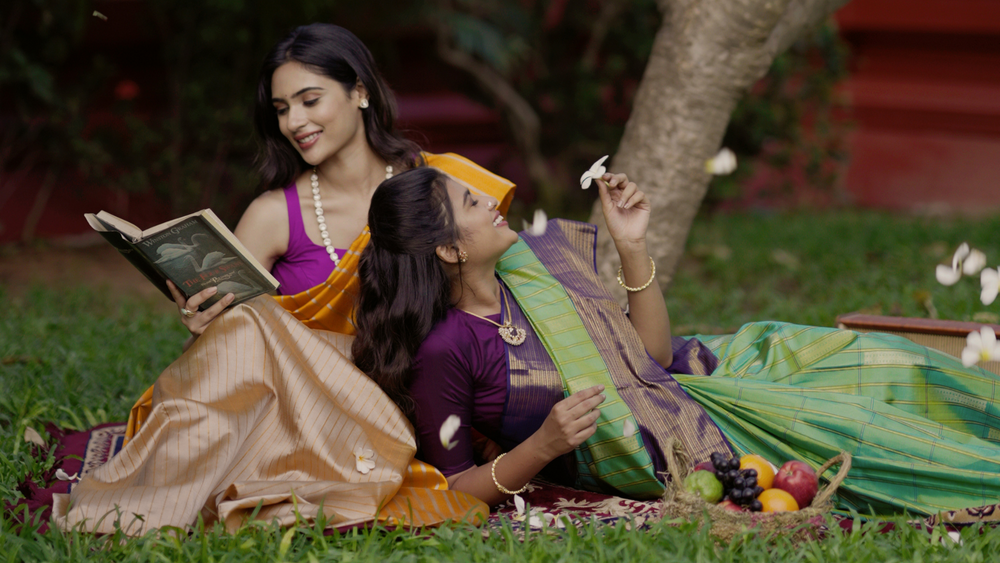The Making of a Kanjivaram Silk Saree
In the rich tapestry of Indian textiles, the Kanjivaram silk saree, stands as a pinnacle of elegance, tradition, and exceptional craftsmanship. These sarees transcend as timeless pieces of art, cherished as heirlooms and proudly adorned during significant celebrations. Let's unravel the intricate journey that brings these masterpieces to life.
Raw Silk: The Essence of Opulence
It all begins with selecting the finest mulberry silk, prized for its superior quality and lustrous sheen. Silkworms thrive on nutrient-rich mulberry leaves, yielding silk filaments renowned for their strength and durability. This raw silk forms the foundational thread that runs through every Kanjivaram saree, ensuring it embodies the luxurious texture and enduring longevity characteristic of Kanchipuram silk.

Twisting: Crafting Warp and Weft Threads
In the skilled hands of Kanchipuram artisans, raw silk undergoes meticulous twisting to form warp and weft threads. This crucial step defines the saree's thickness and resilience. Kanjivaram sarees are famed for their durability, requiring a dense weave of approximately 4800 to 5200 warp threads per saree. Each warp thread, spanning about 25 meters, is precisely twisted to ensure uniformity and strength, capable of creating multiple sarees and blouse pieces.
Dyeing: Infusing Vibrant Hues
After twisting, the warp and weft threads undergo intricate dyeing to achieve the rich, vibrant colors that characterize Kanjivaram sarees. This painstaking process is entirely hand-executed. Threads are cleansed to remove impurities and degummed. They are then immersed in boiling water infused with precisely measured dye powders. Artisans stir the mixture diligently to achieve uniform color absorption. Once dyed, the threads bask in the warmth of sunlight, naturally setting the hues and enhancing their brilliance and depth.

Warping and Weaving: Precision and Artistry
Warping entails aligning each dyed warp thread on the loom with meticulous precision, crucial for defining the saree's width and intricate design. Using a reed, artisans guide each warp thread through the loom to ensure smooth and consistent placement. As the saree takes shape, intricate patterns and motifs unique to Kanjivaram sarees emerge. Simultaneously, artisans weave zari borders—crafted from fine metallic threads—into the loom, adding opulence and finesse to the saree's design.
Finishing: Folding with Care
Upon completion of the weaving process, the saree undergoes precise cutting from the loom, followed by meticulous folding. This final step defines the saree's draping lines, ensuring it retains its graceful appearance when worn. Proper folding preserves the saree's inherent elegance, reflecting the artisans' meticulous craftsmanship and attention to detail—qualities synonymous with Kanjivaram sarees.
Conclusion: A Legacy of Craftsmanship
Crafting a Kanjivaram silk saree transcends textile weaving; it embodies a rich tapestry of heritage, tradition, and artistic finesse. Passed down through generations of skilled artisans in Kanchipuram, each saree tells a tale of dedication, passion, and cultural pride. At Pashudh, we honor and uphold these traditions, weaving the artistry and cultural significance into every thread of our Kanjivaram sarees.



Leave a comment